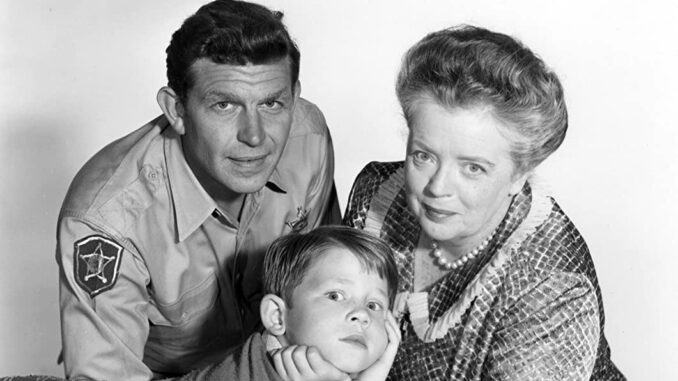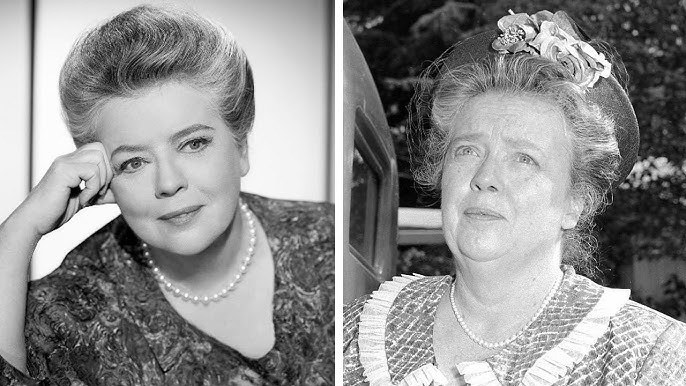
Introduction
Ever wondered what happened to the sweet, apron-wearing Aunt Bee after The Andy Griffith Show ended? Millions remember her home-cooked meals, her caring demeanor, and her old-fashioned wisdom. But the actress behind that beloved character, Frances Bavier, lived a life far more complex than Mayberry ever revealed. Let’s dive into her journey, both on and off the screen, and uncover the story of a woman who became a television icon but struggled with the fame that came with it.
Who Was Aunt Bee on ‘The Andy Griffith Show’?
Aunt Bee, played by Frances Bavier, was introduced in the very first episode of The Andy Griffith Show in 1960. She stepped in to help Sheriff Andy Taylor raise his young son, Opie, after the passing of Opie’s mother. Aunt Bee quickly became the heart of the household—and the town.
Frances Bavier: The Actress Behind the Apron
Frances Bavier wasn’t your typical Hollywood starlet. Trained in theater, she had a deep background in drama, not comedy. She brought gravitas to Aunt Bee’s character, often giving Mayberry’s lighthearted plots a touch of real-world sincerity.
Aunt Bee’s Role in the Series: More Than Just a Housekeeper
Aunt Bee did more than cook and clean. She embodied the moral center of Mayberry, representing stability, tradition, and compassion. Her character gave balance to the more eccentric residents of the town and helped keep Sheriff Andy grounded.
Was Frances Bavier Like Aunt Bee in Real Life? Not Exactly
Though millions loved Aunt Bee, Frances Bavier herself reportedly didn’t enjoy playing the part. Cast and crew later revealed that she had difficulty connecting with the rest of the team. Some said she was distant, others said she was shy. Either way, there was a stark contrast between Aunt Bee’s warm persona and Frances Bavier’s off-camera demeanor.
Frances Bavier’s Relationship with Andy Griffith Was Strained
Despite their on-screen bond, Bavier and Griffith didn’t always see eye to eye. In fact, they had little personal relationship outside of filming. Years after the show ended, Bavier allegedly reached out to apologize for any tension, but the rift remained one of the more somber footnotes in the show’s legacy.
What Happened to Aunt Bee After the Show Ended?
After The Andy Griffith Show ended in 1968, Aunt Bee continued on in the spin-off series Mayberry R.F.D. for two more seasons. But by 1970, Bavier retired from the role—and acting altogether. It was the end of Aunt Bee’s journey on television, but her legacy was only beginning.

Why Frances Bavier Left Hollywood Behind
Bavier moved to Siler City, North Carolina, in the 1970s, seeking a quiet life far from Hollywood’s spotlight. She bought a house and lived there until her death, rarely making public appearances or granting interviews. Her retreat from fame was almost as dramatic as her time in the spotlight.
Frances Bavier Became a Recluse in Her Final Years
Neighbors and townspeople in Siler City said Bavier kept to herself. She reportedly lived with several cats and preferred solitude. Some saw her as a private woman who had given all she could to the public eye; others described her as eccentric and difficult.
The Contrast Between Fame and Isolation
It’s almost poetic—while Aunt Bee was surrounded by love, laughter, and community, Frances Bavier chose a life of quiet isolation. The actress who brought joy to millions found herself wanting nothing more than peace and privacy in her twilight years.
Was She Ever Honored for Her Role as Aunt Bee?
Though Bavier stepped out of the public eye, her fans never forgot her. She received fan mail until the end of her life and was eventually honored posthumously for her contribution to American television history.
What Was Frances Bavier’s Cause of Death?
Frances Bavier passed away on December 6, 1989, at the age of 86. She died of congestive heart failure, chronic obstructive pulmonary disease, and a host of other age-related complications. At the time of her death, she was living alone.
Did Aunt Bee and Opie Stay in Touch After the Show?
Ron Howard, who played Opie, spoke kindly of Bavier in interviews. However, there’s little evidence to suggest they kept in regular contact after the show ended. Still, Howard has publicly acknowledged her talent and the impact she had on The Andy Griffith Show.
The Enduring Legacy of Aunt Bee
Despite her reclusive final years, Bavier’s portrayal of Aunt Bee remains a cultural touchstone. For many, she’s the quintessential TV mother figure—warm, nurturing, and unshakably kind. Her character still lives on in reruns, DVDs, and streaming platforms, comforting new generations.
What Can We Learn from Frances Bavier’s Story?
There’s a lesson in Bavier’s journey: Fame doesn’t always equal happiness. Though she played one of TV’s most beloved characters, her personal life was marked by solitude and emotional distance. It’s a reminder that behind every character, there’s a real person—with their own struggles, fears, and desires.
Conclusion
Frances Bavier, the woman who brought Aunt Bee to life, left behind a legacy as rich and complex as the character she played. Though she faded into quiet obscurity after leaving Mayberry, her presence still lingers in the hearts of millions who grew up watching her in black and white. Aunt Bee may have set down her apron, but she never left our memories.
FAQs
1. Did Frances Bavier enjoy playing Aunt Bee?
Not entirely. While she appreciated the impact of the role, Bavier found it emotionally and socially taxing and didn’t always get along with the cast.
2. Why did Aunt Bee disappear from TV after the 1970s?
Bavier retired from acting and chose to live a quiet, reclusive life in Siler City, North Carolina.
3. What happened between Andy Griffith and Frances Bavier?
Their relationship was reportedly strained. Although they respected each other professionally, they weren’t personally close.
4. Was Frances Bavier honored after her death?
Yes. Despite her reclusive nature, fans and TV historians continue to celebrate her work, especially her role as Aunt Bee.
5. Where is Frances Bavier buried?
She is buried in Oakwood Cemetery in Siler City, North Carolina—the small town she called home in her final years.
